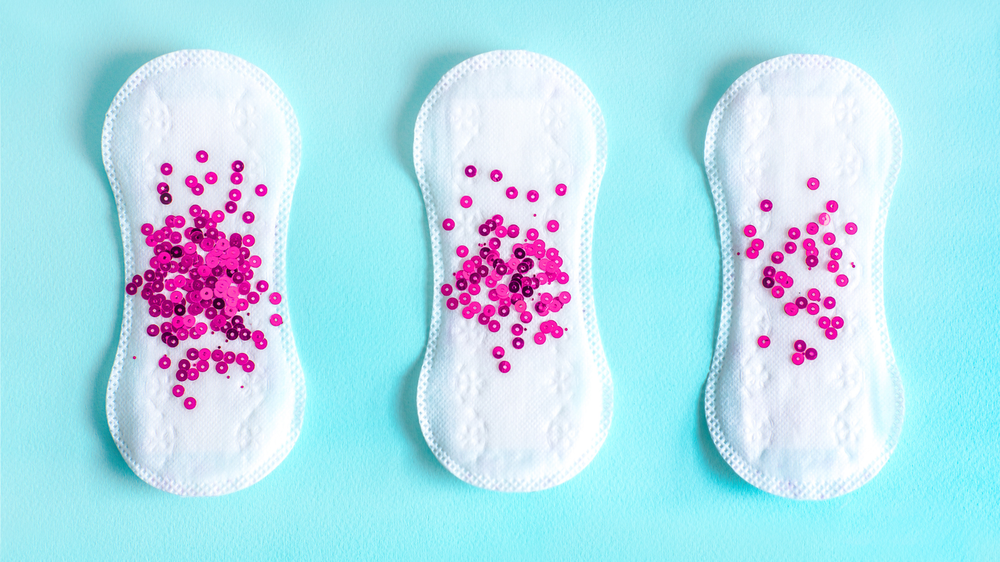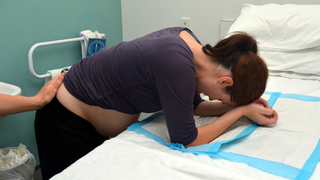Postpartum bleeding (lochia) is a normal part of recovery, but some clots may remain inside the uterus longer. You may feel pain and discomfort, which can lead to unwanted complications. You can learn to identify the signs of retained blood clots so that you know when it is an emergency.
What Are Retained Blood Clots and How Do They Form?
Your body sheds the remaining tissue and blood after delivery, no matter the type of birth you experienced. It takes almost 4 to 6 weeks for your uterus to expel them completely, but some blood or bits of the placenta may remain inside. Your body forms clots from the leftover tissues or blood.The clots can obstruct the normal flow of lochia, causing pain or pressure in the lower abdomen. The reasons are listed below:
- Your uterine wall may still have some membranes of the placenta attached to it
- The uterus does not contract firmly to push out the remaining blood
- Infections or scarring can prevent normal uterine drainage
Why Does It Happen to Some Women and Not Others?
When it comes to postpartum recovery, not all are the same. Some factors make you more susceptible to having retained blood clots.- Prolonged labour or difficult delivery
- Cesarean section or assisted birth (forceps/vacuum)
- Placenta previa or accreta, a condition in which the placenta attaches too deeply
- Twin or multiple pregnancies
- Previous uterine surgeries
- Incomplete removal of the placenta
What Symptoms Should You Watch For?
You may pass small clots with heavy bleeding after delivery, but some signs show that there is a problem.- Heavy bleeding after it had slowed down
- Foul-smelling vaginal discharge
- Severe cramping or pain in the lower abdomen
- Fever or chills
- Passing clots that are bigger than a coin
- Feeling dizzy, weak, or lacking energy
Can Retained Blood Clots Affect Breastfeeding or Recovery?
Your uterus may not contract properly due to retained blood clots, and you may continue to lose blood. It can lead to anaemia due to low iron levels in your body. You may feel tired and weak, which makes breastfeeding harder.You may also experience a rise in your body temperature due to infections caused by the clots. It can also affect your milk supply. The good thing is that you can make a full recovery by getting treatment on time so that you can continue to breastfeed.
How Are Retained Blood Clots Diagnosed?
Your doctor may confirm retained blood clots in the following ways.- Do a physical examination to check your uterus size and tenderness
- Recommend an ultrasound to assess for tissue or clots
- Check your haemoglobin level to assess blood loss
What Are the Treatment Options?
Your doctor may suggest the treatment based on the size of the clots and your symptoms.- Medicines like oxytocin help the uterus contract and naturally expel the remaining blood
- In some cases, a doctor may remove the clot during an examination
- If clots or tissue remain, a minor procedure called Dilation and Curettage (D&C) or vacuum aspiration may be required
- In case you have an infection, you will need antibiotics to prevent it from spreading
What Can You Do to Help Your Body Recover Naturally?
You can support your body in its natural healing.- Give your body enough time to heal. Avoid heavy lifting or strenuous activity in the first few weeks.
- Water helps your uterus contract and flush out waste, so drink enough of it.
- Nursing triggers natural uterine contractions that can clear the uterus
- Note the colour, smell, and amount of the blood you lose
- Eat spinach, jaggery, lentils, and dates to replenish your blood levels
When Should You See a Doctor?
Various signs show you need medical help.- Bright red bleeding that doesn’t slow down after the first week
- Large blood clots or heavy bleeding, soaking pads every hour
- Persistent abdominal pain
- Foul odour or fever
- Dizziness or fainting spells
Emotional and Mental Well-being After Delivery
Postpartum is a challenging phase, which includes heavy bleeding. You may feel drained in such times, but talking to someone about it can help you ease your burden. Talk about your needs with your partner, a family member or a doctor. Emotional recovery requires proper rest and support, so do not take them lightly.What to Do Next: A Quick Checklist
- Keep track of your bleeding pattern daily
- Do not ignore abdominal pain or foul-smelling discharge
- Eat nourishing foods and stay hydrated
- Attend your postpartum check-up (usually within 6 weeks)
- Ask your doctor if you need an ultrasound for persistent bleeding
In this article:
FAQs on Why Some Women Experience Retained Blood Clots After Delivery?
- Are small blood clots normal after delivery?
You may pass small clots during the first few days after delivery, which is normal. The problem arises when the clots are too large and frequently appear. You must seek medical help in such cases. - Can retained blood clots go away on their own?
Your uterus can naturally expel any remaining small clots, but larger retained ones require urgent medical attention. - Does having retained clots affect future pregnancies?
If you get proper treatment for the retained clots, you can go on to have a healthy pregnancy in the future. You can discuss this condition with your doctor during prenatal visits.










